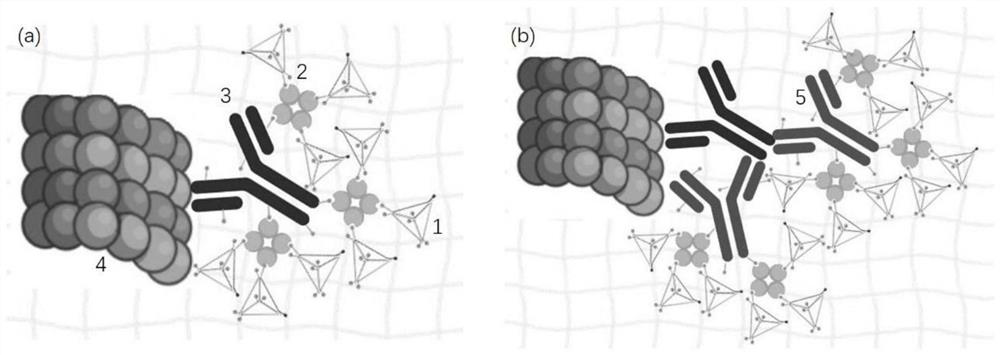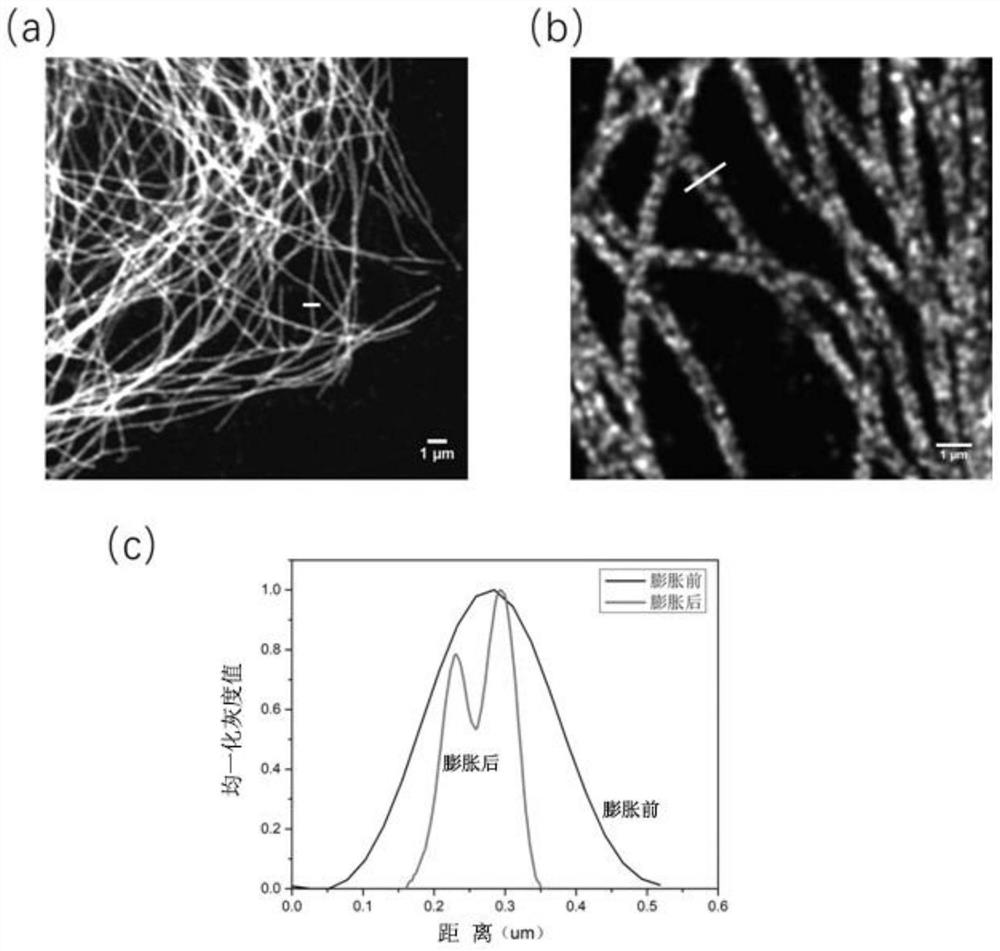Fluorescent staining method for target protein of DNA nano-structure labeled cell
A nanostructure, fluorescent dyeing technology, applied in the field of optical microscopy, can solve problems such as loss of fluorescence signal
- Summary
- Abstract
- Description
- Claims
- Application Information
AI Technical Summary
Problems solved by technology
Method used
Image
Examples
Embodiment Construction
[0029] In order to illustrate the present invention more clearly, the present invention will be further described below in conjunction with preferred embodiments and accompanying drawings. Similar parts in the figures are denoted by the same reference numerals. Those skilled in the art should understand that the content specifically described below is illustrative rather than restrictive, and should not limit the protection scope of the present invention.
[0030] 1. Design and sequence synthesis of DNA tetrahedral nanostructures
[0031] The four strands of the DNA tetrahedral nanostructure were synthesized by Sangon Bioengineering (Shanghai) Co., Ltd., and biotin, fluorescent dyes and acrylamide groups were modified during synthesis. The 4 chain sequences are as follows:
[0032] A:
[0033] 5'-ACATTCCTAAGTCTGAAACATTACAGCTTGCTACACGAGAAGAGCCGCCATAGTA-3'
[0034] (SEQ ID NO:1), the 5' and 3' ends are modified with Alexa Fluor 488;
[0035] B:
[0036] 5'-TATCACCAGGCAGTTG...
PUM
 Login to View More
Login to View More Abstract
Description
Claims
Application Information
 Login to View More
Login to View More - R&D
- Intellectual Property
- Life Sciences
- Materials
- Tech Scout
- Unparalleled Data Quality
- Higher Quality Content
- 60% Fewer Hallucinations
Browse by: Latest US Patents, China's latest patents, Technical Efficacy Thesaurus, Application Domain, Technology Topic, Popular Technical Reports.
© 2025 PatSnap. All rights reserved.Legal|Privacy policy|Modern Slavery Act Transparency Statement|Sitemap|About US| Contact US: help@patsnap.com



